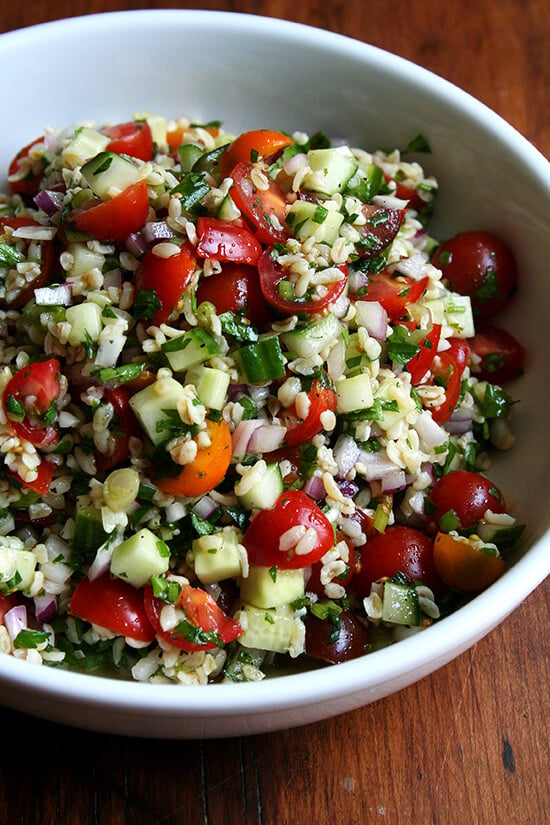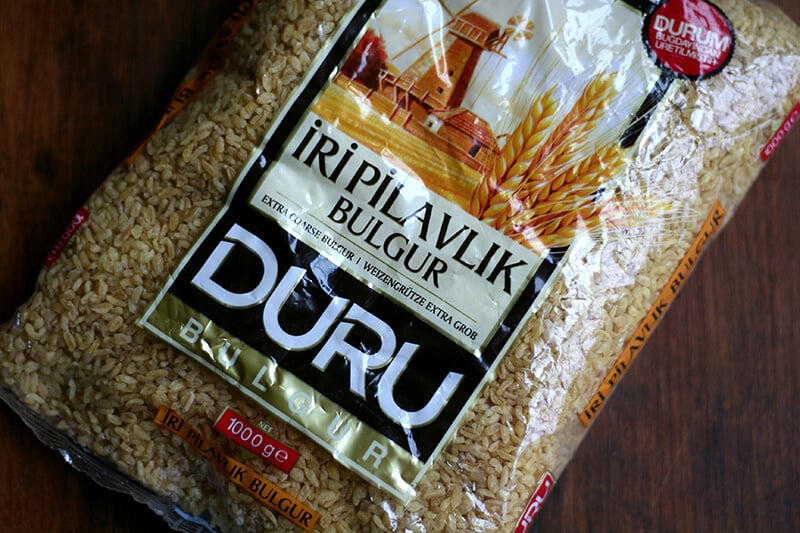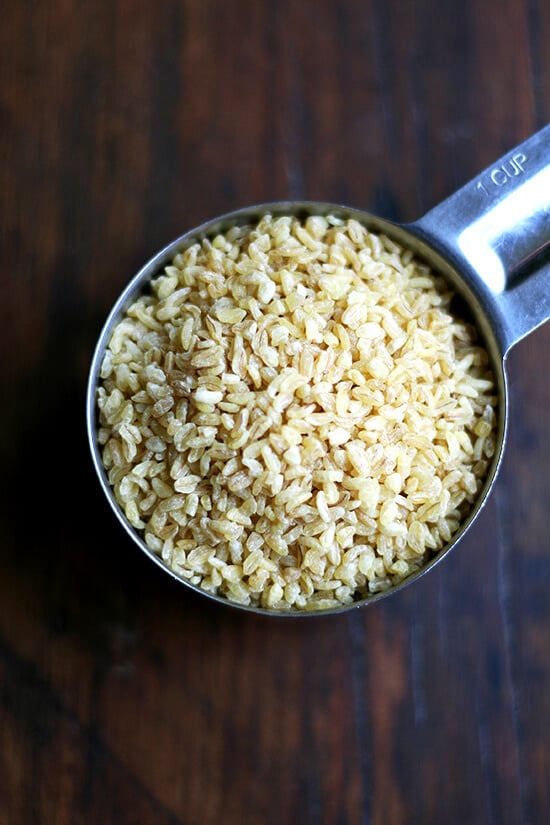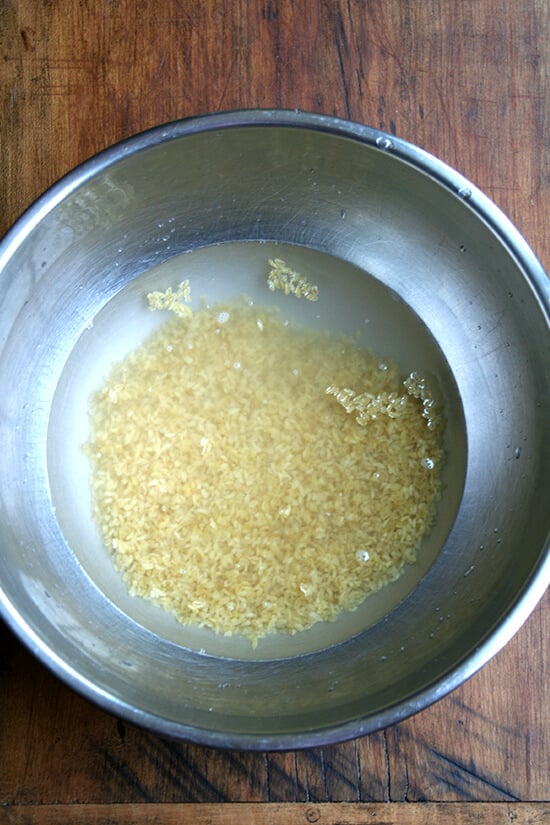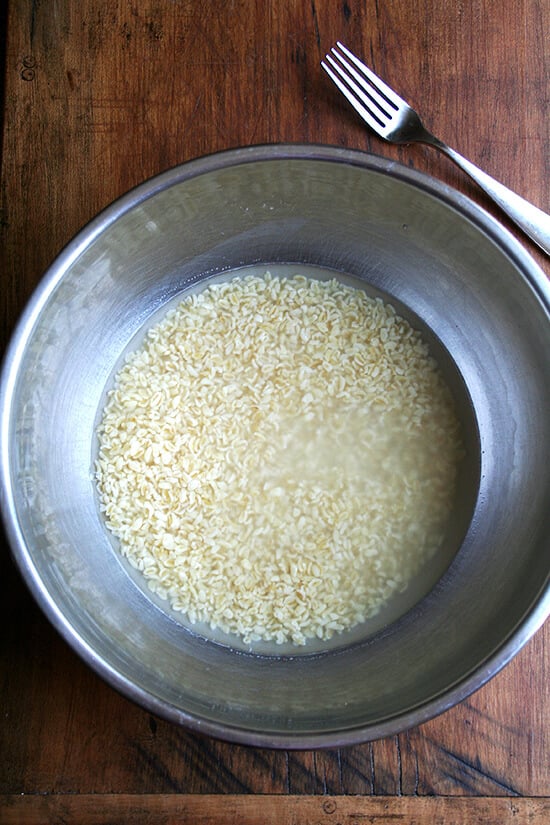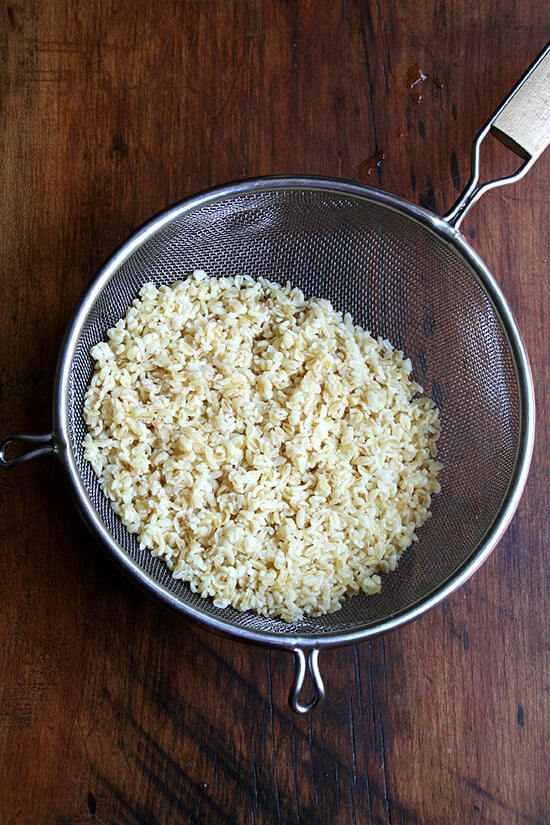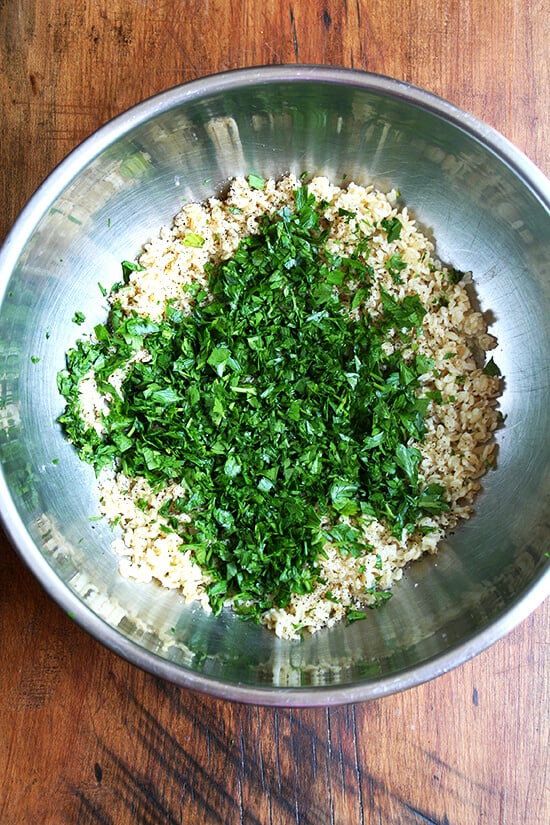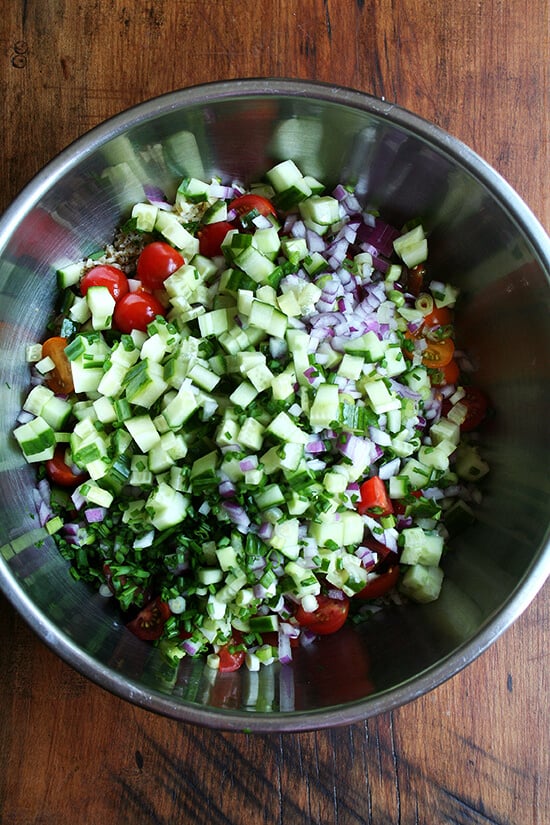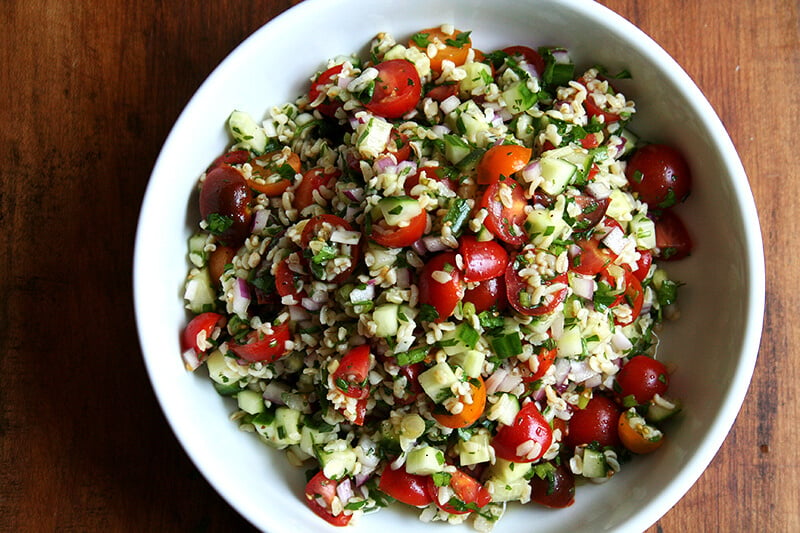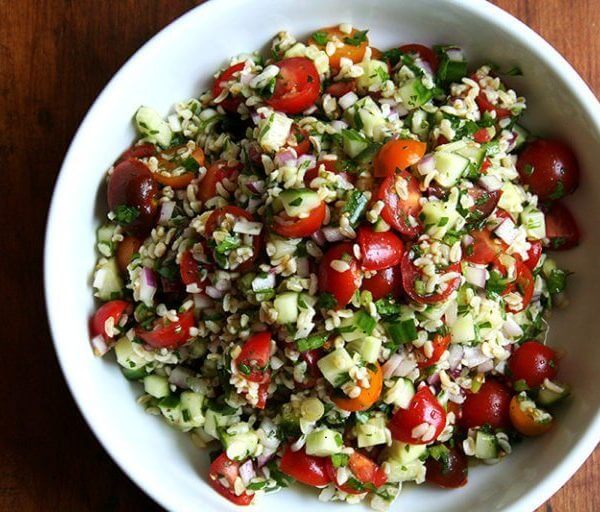Even so, today I discovered that with little more than a knife, a cutting board, and a large bowl, a beautiful whole grain salad can materialize in no time. Determined not to eat takeout for the fourth night in a row, I made a big bowl of tabbouleh, a dish my mother made for us all summer long for as long as I can remember, a dish that feels at once light, satisfying and nourishing. With some warm pita and a block of feta, dinner was served. Unlike many grains, bulgur requires nothing more than cold water — yes, cold! — to fluff up and become edible. You can’t mess it up. There are no grain-to-water ratios to remember; there are no cooking times to adhere to. After an hour of soaking, the cold water is drained and the bulgur is ready to be dressed in olive oil, freshly squeezed lemon juice, salt and pepper. I should note that this tabbouleh is not a traditional Lebanese tabbouleh in which parsley is the star and bulgur an accent. In this salad, the bulgur plays as much of a role as the cucumbers, tomatoes, red onion, scallions and herbs (parsley, chives and mint). Here, too, I’ve used extra-coarse bulgur (found at Greek, Middle Eastern and whole food markets), which is chewier than fine bulgur, tasting more like barley or farro than couscous or quinoa. Of course, any kind of bulgur can be used. In this season of bbqs and potlucks when side dishes are always welcomed whether advertised or not, nothing could make a host happier. This tabbouleh is light and lemony, complementing anything from hot dogs to grilled vegetable kabobs, a dish enjoyed by meat eaters and vegans alike. What’s more, this bright and colorful salad is as delicious as it appears… if only our house could be the same. Fingers crossed for a quick sell. I miss my kitchen. After a one-hour soak in cold water, the bulgur is ready to be drained: If you like whole grain salads, you might like this quinoa salad and either of these farro salads. 5 from 3 reviews
